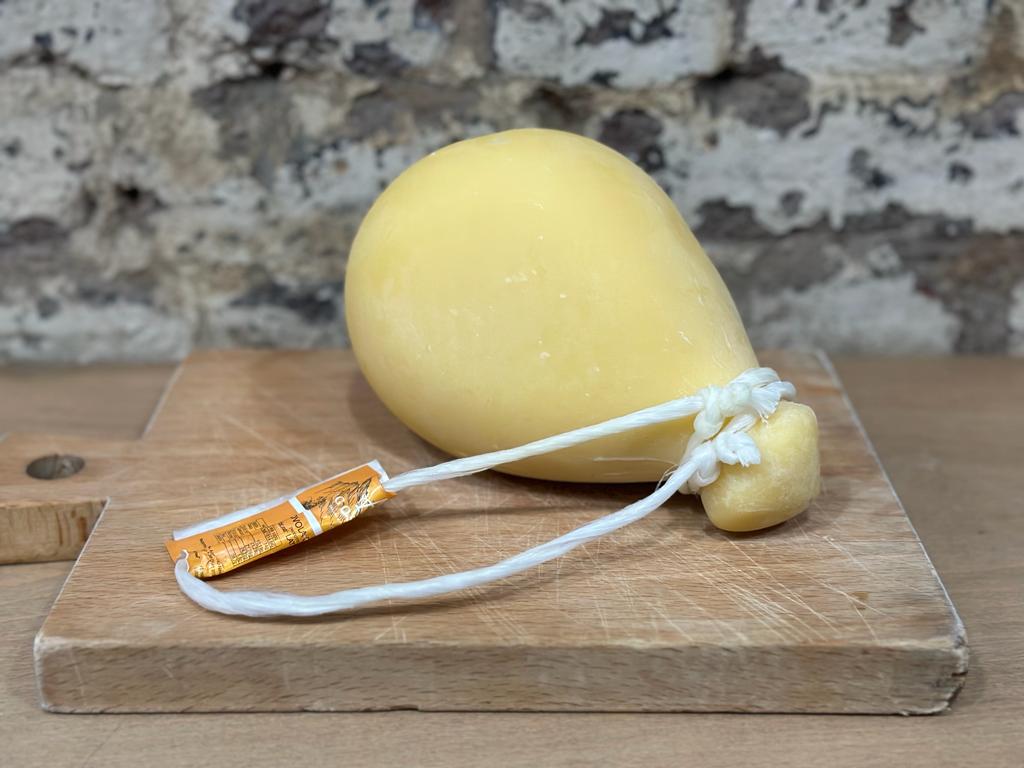
Provola dei Nebrodi, Sicily
Getting goods from Sicily up to Milan where they leave for London is never straightforward; the Straits of Messina are the obvious obstacle but Sebastiano and Luisa Agostino live in Mirto, a village way up in the oak forests of the huge Nebrodi national park that stretches from Randazzo in the east to Mistretta in the west, and this makes things even worse. In their butchers shop Luisa, Sebastiano and his mother Pina make and sell salumi from their black Nebrodi pigs and cheeses from their herds of sheep, goats and cattle. We always take their black pig salsicce and the salted ricotta that Sicilians use so widely for grating or shaving in the kitchen and occasionally they also send us some Provola dei Nebrodi.
Their hand worked Provola is a type of caciocavallo or stretched curd cheese, a way of cheese making that came about as it needs skill but no equipment to make. The curds, having been left to acidify, are bathed in very hot water that makes them elastic and are stretched by hand until long, shiny fibres are formed. These are kneaded into balls of cheese with a traditional ‘head’ that is used to hang them up in pairs along a pole. The pole, that can be slung over a horse during the seasonal moving of cattle from high to low pastures, has led to the name caciocavallo or horse cheese with mozzarella and scamorza eaten fresh and caciocavallo ragusano/ casizolu/ provola and provolone aged for longer.
In recent years Provola dei Nebrodi has become a slow food presidium to encourage more producers to keep the hardy mountain cows whose small but delicious milk yield is so crucial to the quality of the cheese. Sebastiano and Luisa’s cows are a mix; some brown, some black or grey but they describe them all under the generic term of mucche podoliche from the famous landrace that can still be found in small pockets across southern Italy.
Most Italian cattle breeds were developed in the middle of the 19th century, when crosses between imported varieties and native stock produced well-known breeds like the Chianina, the Piemontese and the Romagnola but in the south of the country where agricultural development has always been slower and conditions harsher the ancient Podolica cow is still found. Genetically, the Podolica has links to the Auroch, the huge, extinct herbivore that grazed Europe widely until the bronze age and, like the Auroch, their grazing is really important in preserving countryside that would otherwise become uninhabitable for smaller species.
These Sicilian cows are an important part of the landscape around Luisa and Sebastiano and the provola we received from them is aged for 5 months (our favourite!) and has sweet, buttermilk notes. It's perfect for grilling or serving on a cheese board. It takes a lot of beating in a sandwich too.

